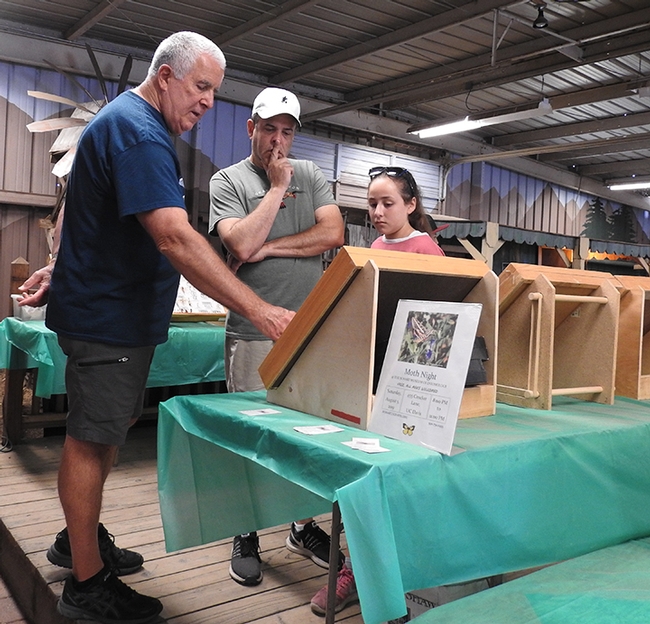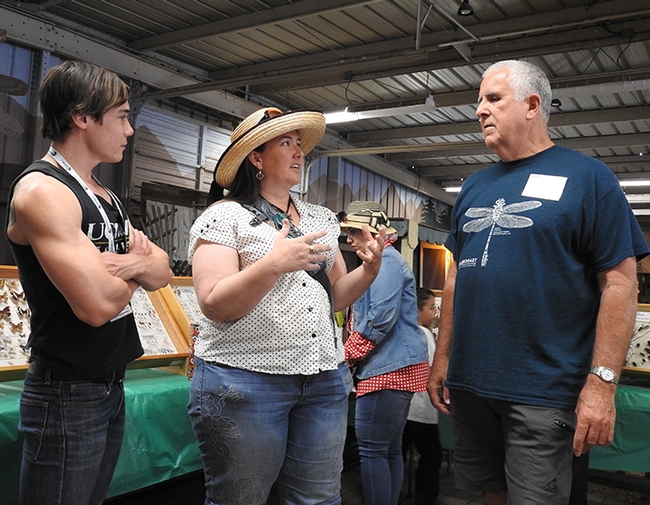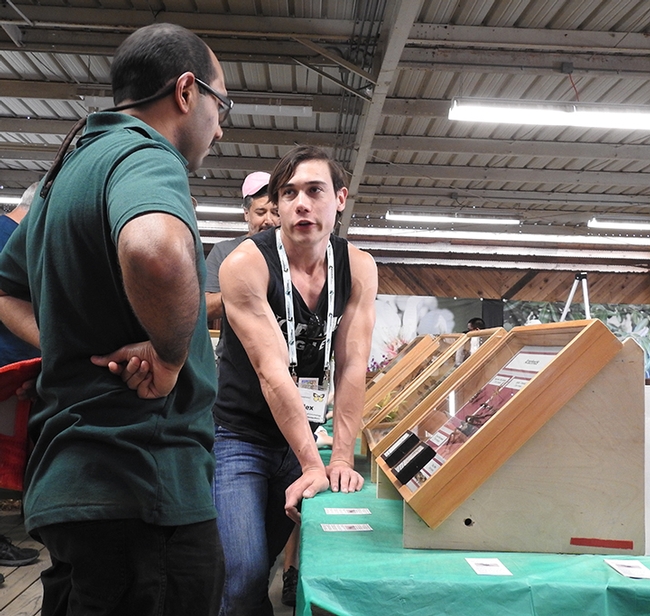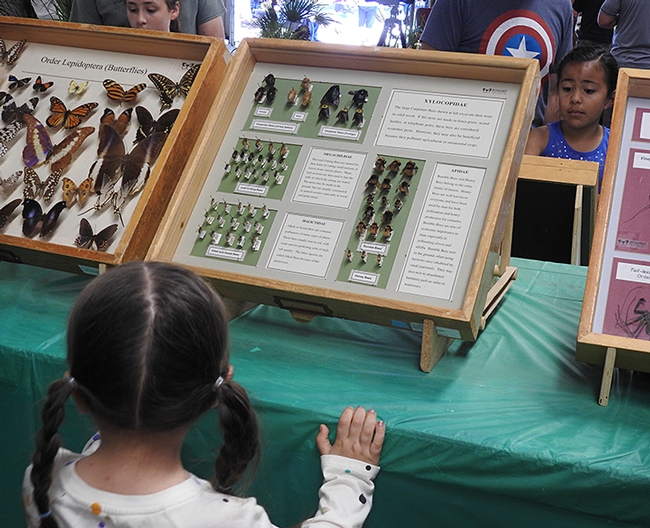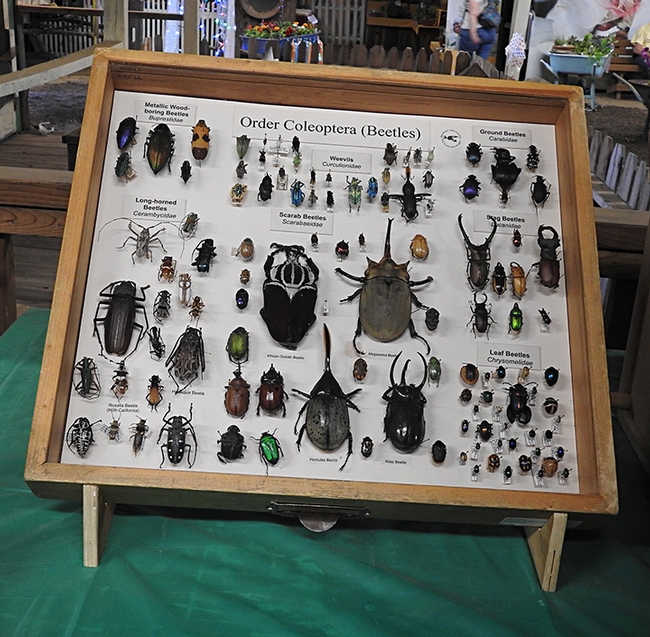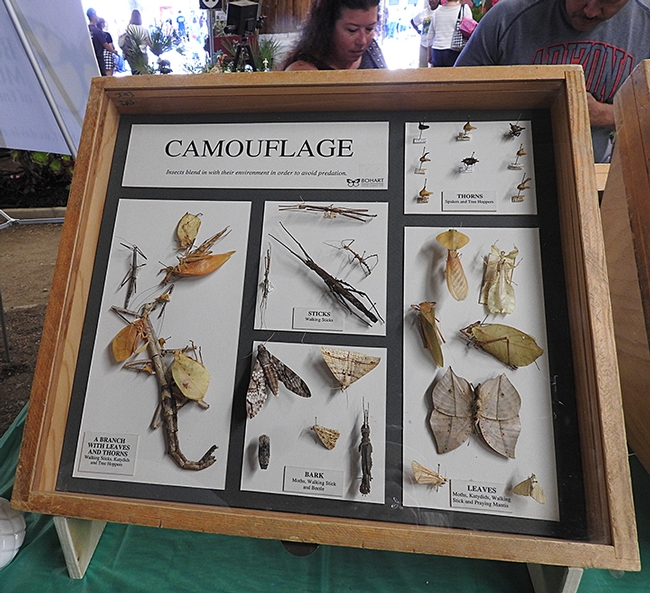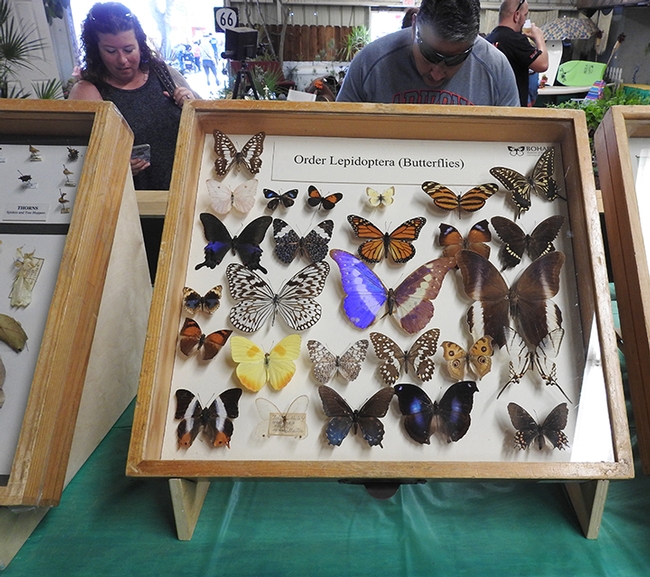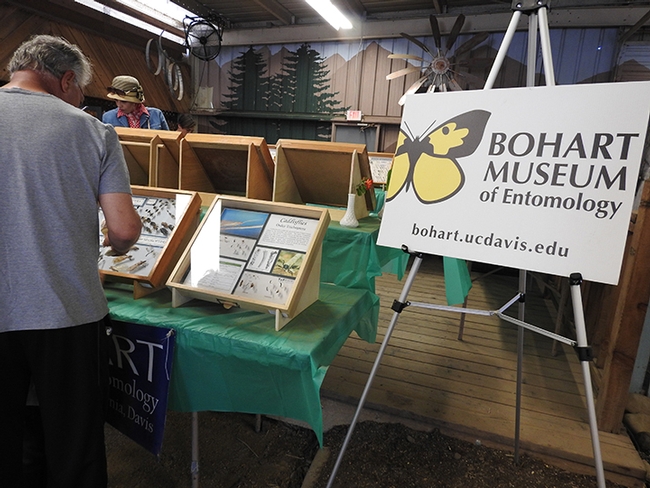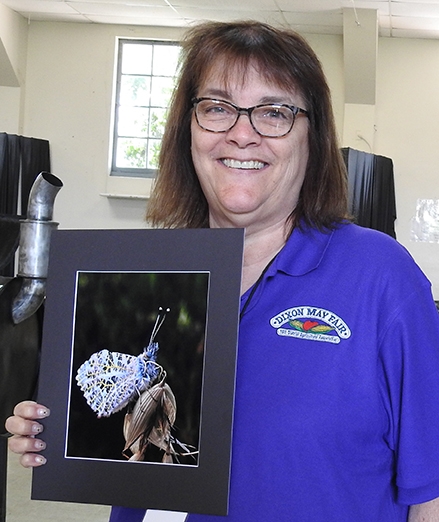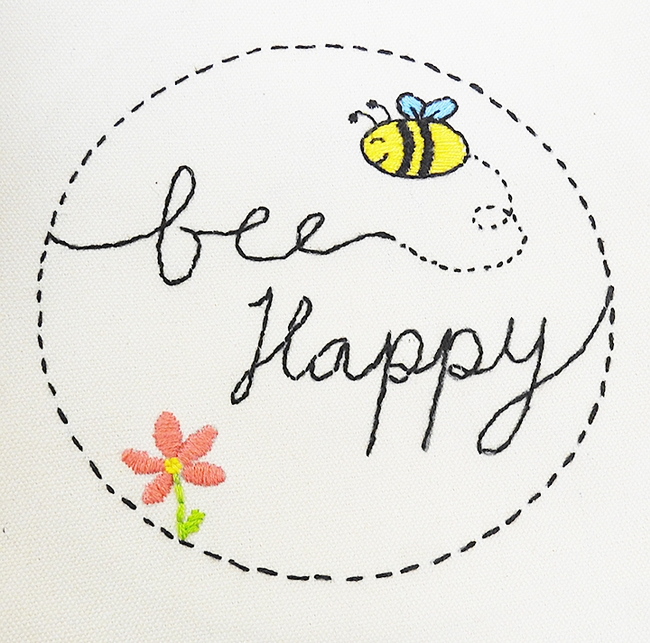- Author: Kathy Keatley Garvey
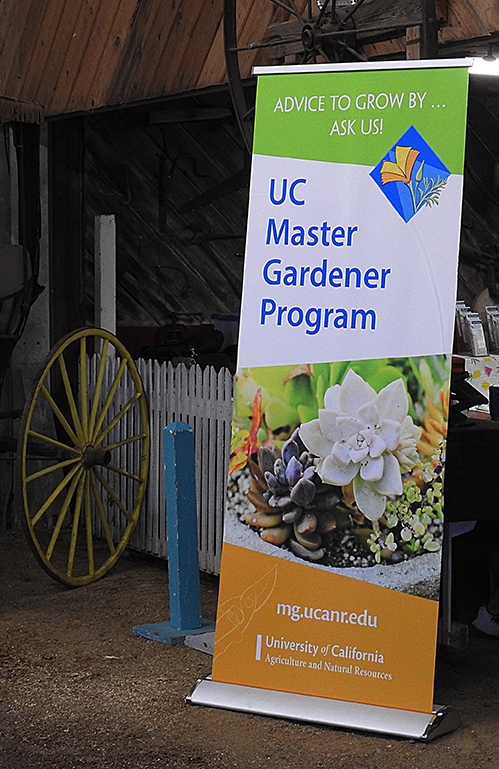
If you visited the horticulture building during the Dixon May Fair (the four-day fair traditionally ends on Mother's Day), you probably saw a team of UC Master Gardeners answering questions from fairgoers and handing out literature.
The UC Master Gardener Program, founded in 1980 and part of the UC Agriculture and Natural Resources (UC ANR), is directed by Missy Gable. The members share a passion for gardening and environmental stewardship, as noted on their website. "UC Master Gardeners are rooted in education and grown in-service! In exchange for training from the University, UC Master Gardeners offer volunteer services and outreach to the general public in more than 1,286 demonstration, community and school gardens across 53 California counties. Last year 6,154 active UC Master Gardener volunteers donated 446,237 hours, and 6.8+ million hours have been donated since the program's inception."
"Our mission is simple: To extend research-based knowledge and information on home horticulture, pest management, and sustainable landscape practices to the residents of California. We stand guided by our core values and strategic initiatives, aiming to inspire, educate, and build communities of eco-conscious gardeners."
The team at the Dixon May Fair mostly fielded questions about vegetable crops--tomatoes proved to be a popular topic. They distributed information from the UC Integrated Pest Management (UC IPM) Program.
If you missed them, the enthusiastic team of Master Gardeners will be back next year. Same fair, same building, same booth...and with some of the same questions asked by fairgoers--"I have a question about planting tomatoes..." You can also contact the UC Solano Master Gardeners via their website. Jennifer Baumbach serves as the program coordinator for both Solano and Yolo counties.
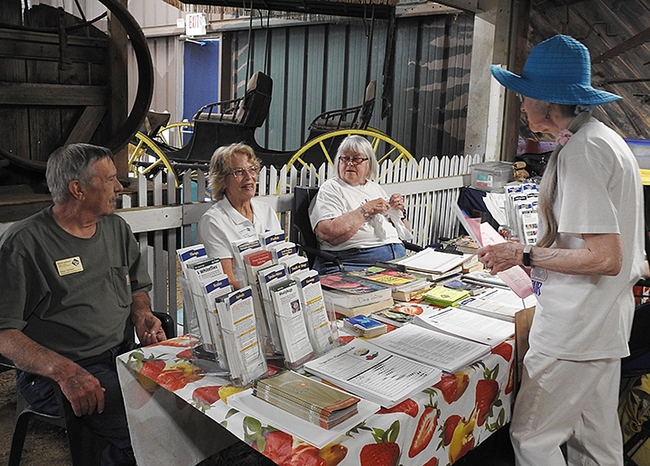
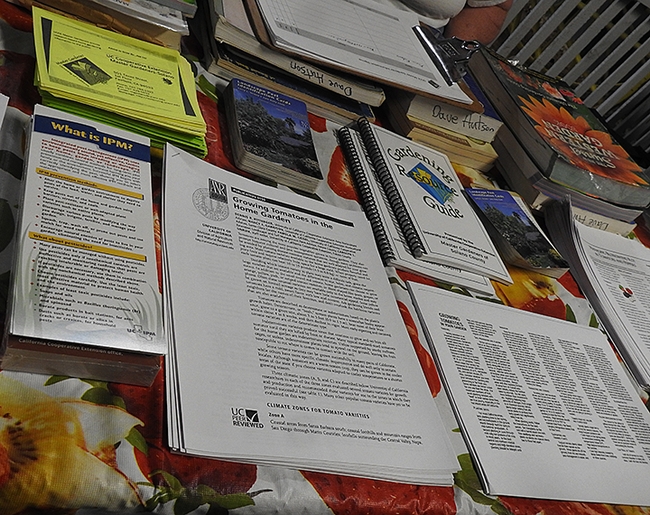
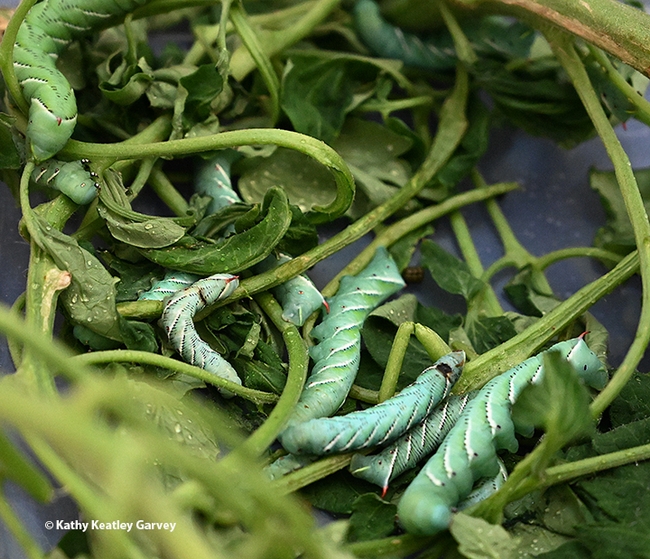
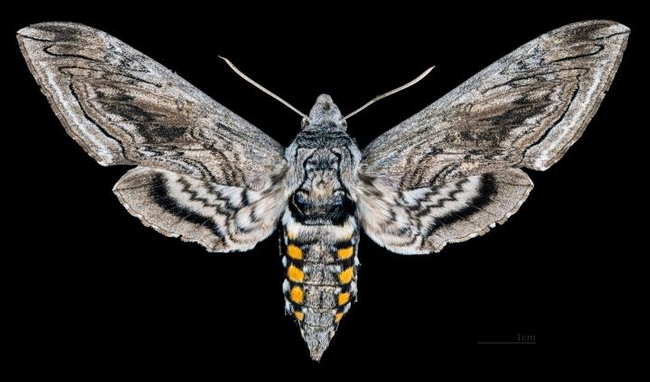
- Author: Kathy Keatley Garvey
That's the theme of the 146th annual Dixon May Fair, the 36th District Agricultural Association.
It's been a long, cold winter and we're ready for that! So are the exhibitors and fairgoers.
When the fair opens Thursday, May 11 and continues through Sunday, May 14 at 655 S. First St., Dixon, you'll see bees, butterflies and blossoms--and much more--exhibited in Today's Youth Building (Denverton Hall) and in the Floriculture Building.
Denverton Hall superintendent Bernadette "Bernie" Jacquot of Gridley, former exhibits supervisor at the Butte County Fair, has served more than 30 years in the fair industry.
A few of the insect-related exhibits in the Today's Youth Showcase (since this is a Bug Squad blog):
- A crocheted bumble bee, the work of Faith Ford, 14, of Vacaville
- A wall hanging of a butterfly by Elizabeth Martinez, 14, of Elk Grove
- A photo of a lady beetle, aka ladybug, by Isabelle Johnson-Lopez, 11, of Fairfield
- Butterfly art hanging (diamond art) by Regan Van Tuyl, 13 of Dixon
- A photo of a butterfly titled "Painted Wings" by Regan VanTuyl, 13 of Dixon (identified by UC Davis distinguished professor Art Shapiro as the ventral side of a Sara Orange-Tip (See https://butterfly.ucdavis.edu/butterfly/anthocharis/sara-sara)
- A "bee happy" tote bag, the work of Jessie Means, 15, of Vacaville
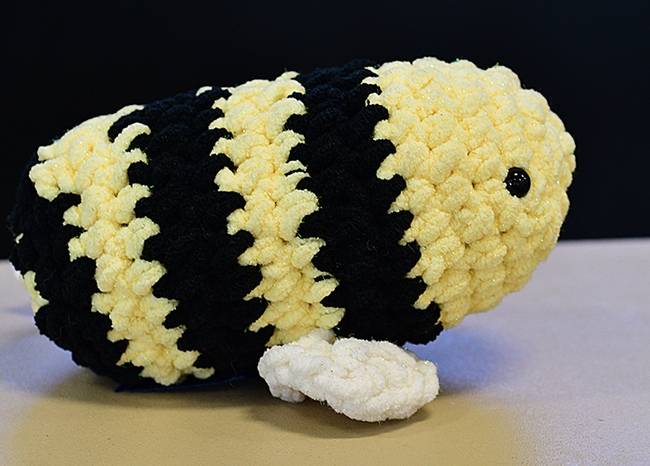
On one wall, Connelly has created what looks like a Matilija poppy plant, complete with a six-sectioned white ceramic platter for the petals, centered with a cluster of yellow ribbons. In another area, her honey bee with widespread yellow wings is heading for a purple flower, already occupied by a golden bee.
Key information about the fair:
Thursday, May 11: 4 to 10 p.m. (Ticket sales and buildings close at 9 p.m.) No re-entry after 9 p.m.
Friday, May 12: Noon to 11 p.m. (Ticket sales and buildings close at 10 p.m.) No re-entry after 10 p.m.
Saturday, May 13: 11 a.m. to 11 p.m. (Ticket sales and buildings close at 10 p.m.) No re-entry after 10 p.m.
Sunday, May 14: Noon to 10 p.m. (Ticket sales and buildings close at 9 p.m.) No re-entry after 9 p.m.
SPECIAL DAYS
THRIFTY THURSDAY, May 11: $5 admission for everyone 5 years of age and older
KIDS' DAY FRIDAY, May 12: Children 12 and under free fair admission all day
GATE PRICES
Adult 13 and Over: $15
Children 5 to 12 years of age: $10
Children 4 & Under: Free fair admission
Senior Citizen Discount: 65 and over, $10
Military Discount, with an active duty card, $10
Parking: $5 per vehicle
Access the fair website for information on musical entertainment, special shows, and rules. The Dixon Fair May chief executive officer is Patricia "Pat" Conklin, a veteran fair manager with 40-plus years of management experience in the fair industry (deputy CEO of the Solano County Fair, CEO of Butte County Fair, CEO of Sonoma-Marin Fairs and then CEO of the Dixon May Fair, beginning in 2012.) She was inducted into the Western Fairs' Association Hall of Fame in 2022.
Pat grew up in Dixon and, as a member of both the 4-H and FFA programs, showed livestock in the same fair that she manages today.
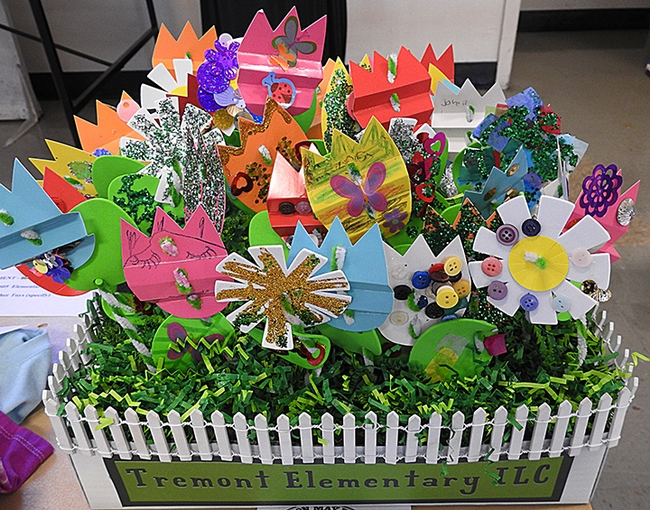
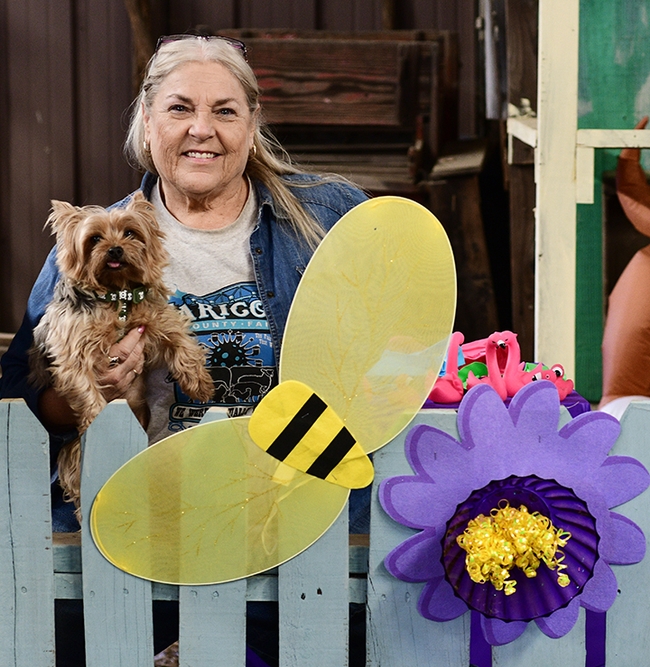
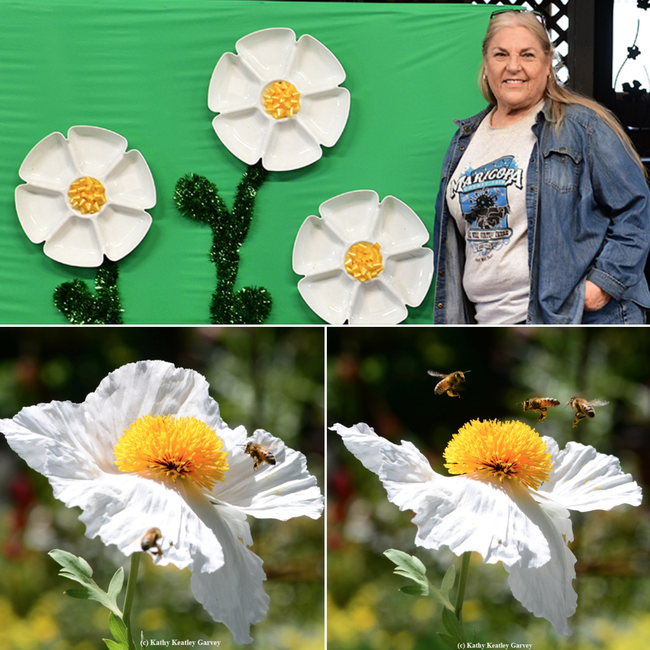
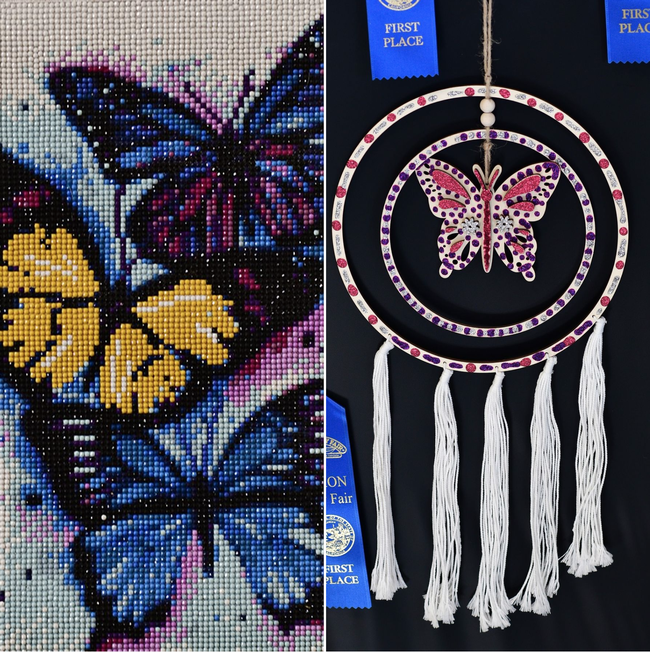
- Author: Kathy Keatley Garvey
Bees, butterflies and beetles will be well represented at the 145th annual Dixon May Fair, which opens Thursday, May 5 for a four-day run (May 5-8) after a two-year hiatus.
They're among the insects depicted in photographs and other art by Solano County 4-H'ers and other youth in the Youth Building, Denverton Hall. The work includes that of Matthew Agbayani of the Vaca Valley 4-H Club, Vacaville, who entered a color photograph of a honey bee and a syrphid fly (aka flower fly or hover fly) foraging on a sunflower.
The judging is done, the ribbons are hung and the doors will open at 4 p.m. May 5.
Chief executive officer of the fair since 2012 is Patricia Conklin, a member of the Western Fairs Association Hall of Fame and a 4-H and FFA alumnus who grew up in Dixon and exhibited at the Dixon May Fair in her youth. Her daughter, Leta Myers, a marine biologist, assisted with the clerking during the recent judging. Like her mother, she, too, is a 4-H and FFA alumnus, but in Gridley, Calif., where Mom served as CEO of the Butte County Fair for 10 years.
The Dixon May Fair, the 36th District Agriculture Association, is the oldest district fair and fairgrounds in the state. It traditionally ends on Mother's Day. This year's theme is "Super Fun.”
The fairgrounds are located at 655 S. First St., Dixon. Fair hours are noon to 9 p.m. on May 5; noon to 10 p.m. on May 6; 11 a.m. to 11 p.m. on May 7; and noon to 10 p.m. on May 8. General admission is $15 for those 13 and older; $10 for children ages 5 to 12; and free for children 4 and under. Seniors over age 65 and military members with active duty cards will be admitted for $10. Special days include Thrifty Thursday, when general admission for those 5 and older is $5, and Kids' Day Friday, with free admission all day for children 12 and under. See Dixon May Fair website and fast facts for more information on entertainment, exhibits, livestock shows and parking.
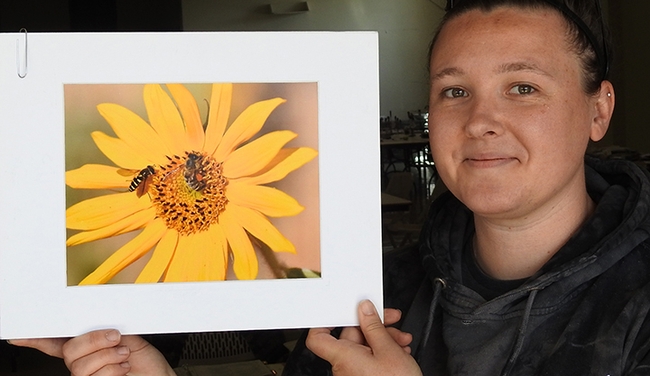
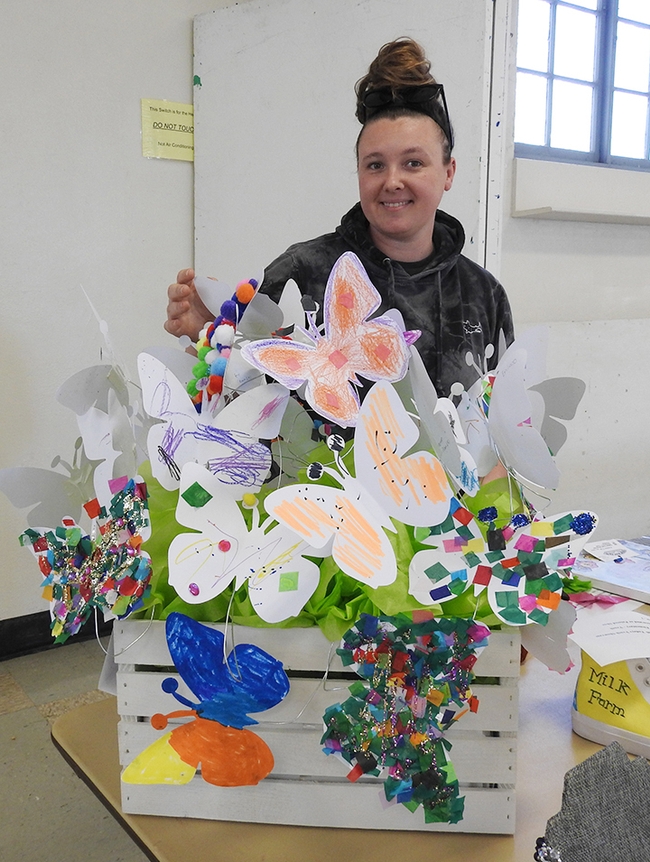
- Author: Kathy Keatley Garvey
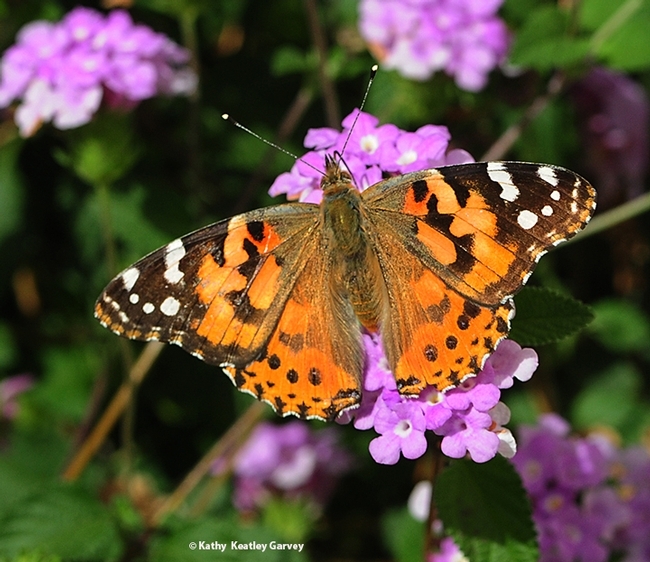
Oscar Wilde opined in his 1889 essay, The Decay of Lying: An Observation, that "Life imitates Art far more than Art imitates Life."
It's up for discussion. Take the painted lady butterfly, Vanessa cardui. In real life, it is spectacular but the average fan may never be able to photograph it well in the wild. In art, you can depict it as you see it, or how you think it should be depicted. Either way, these butterflies draw attention.
Artist Roberto Valdez finds them fascinating, too. His Dixon May Fair entry in oils and acrylics, adult fine arts, won a well-deserved "best of show" in the Professional Fine Arts category.
No thanks to the COVID-19 pandemic, the Dixon May Fair--which dates back to 1876 and is renowned as the oldest district fair and fairgrounds in the state of California--canceled its 2020 and 2021 fairs. This year, however, the fair accepted entries. Judges scored the entries on tables set up in Denverton Hall and images of the winning entries were posted online.
V. cardui has a colorful history. Art Shapiro, UC Davis distinguished professor of evolution and ecology, writes on his research website that "apparently the entire North American population winters near the U.S.-Mexico border, breeding in the desert after the winter rains generate a crop of annual Malvaceous, Boraginaceous and Asteraceous hosts. The resulting butterflies migrate north. In good years (lots of desert rain) they may do so by billions, interfering with traffic and attracting the attention of the media."
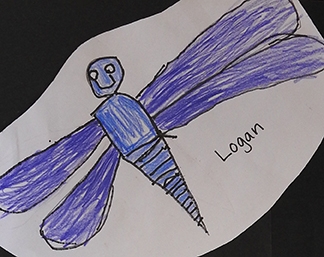
Valdez' painting depicts 13 painted ladies fluttering by him or stopping to nectar. That's something you don't see often except during the height of a migration.
If you're an insect enthusiast, you'll enjoy seeing the online entries of insects depicted in paintings, photographs, drawings and jewelry. And you'll see bee condos or bee hotels (housing for leafcutter bees and blue orchard bees) crafted by youth.
At the judging tables in Denverton Hall, we also admired a drawing of a friendly blue dragonfly, the work of eight-year-old Logan Rush of Vacaville. He nailed it! Future entomologist? Maybe!
The Dixon May Fair, headed by chief executive officer Patricia Conklin, supports the communities of Dixon, Vacaville, Fairfield, Rio Vista, Elmira, all of Solano County, and Woodland and Davis, both of Yolo County. The 2021 Dixon May Fair normally would have taken place Thursday through Sunday, May 6-9, ending on Mother's Day. However, vendors offered a taste of the fair ("grab and go" food) for fans to enjoy.
Pre-COVID, the fair hosted community and agriculture-related activities throughout the year. The UC Davis Bohart Museum of Entomology plays a role in the annual four-day fair by providing exhibits. Next year!
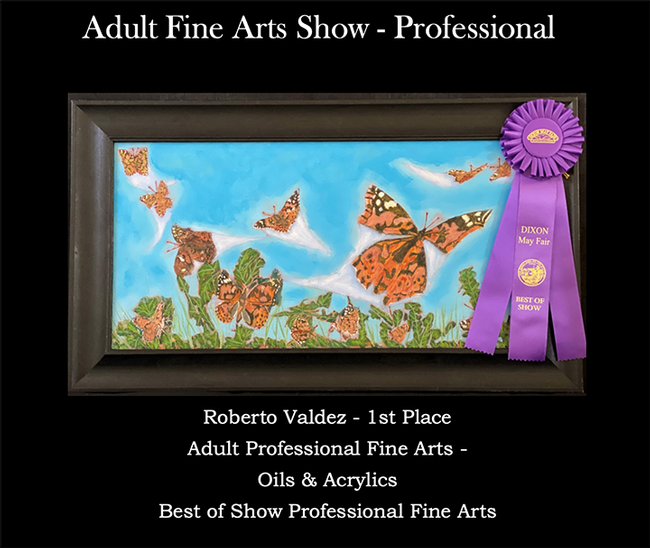
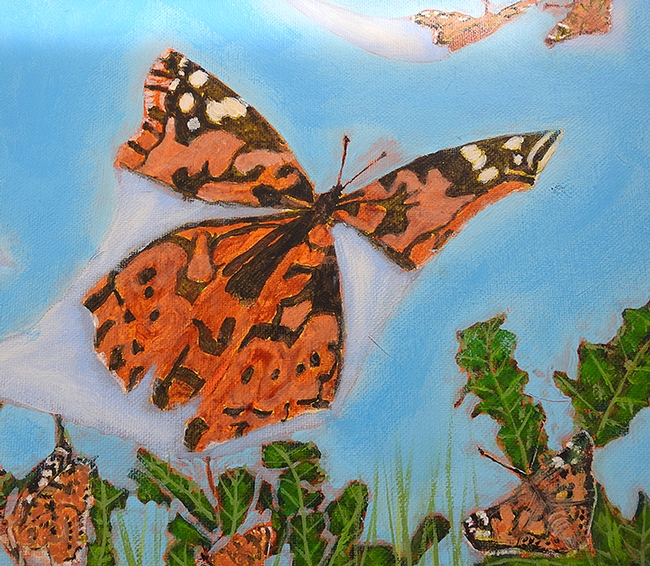
- Author: Kathy Keatley Garvey
Bugs from the Bohart Museum of Entomology, UC Davis, grabbed the interest of fairgoers at the 144th annual Dixon May Fair, held May 9 through May 12.
Entomologists Jeff Smith and Alexander "Alex" Dedmon kept busy answering questions on Saturday in the "Oh My" insect display area of the Floriculture Building, as fairgoers learned about bees, butterflies, beetles, praying mantids, and flies, plus aquatic insects, camouflaged insects, and more.
Smith curates the Lepitopdera (moths and butterflies) section at the Bohart Museum, part of the UC Davis Department of Entomology and Nematology. The insect museum is located in Room 1124 of the Academic Surge Building on Crocker Lane. Dedmon is a forensic entomologist and a doctoral student of professor Robert Kimsey. He volunteers at many of the Bohart events.
"Jeff was absolutely the star," Dedmon said. "He handled everything wonderfully."
"It was excellent on Saturday, and I stayed from 11 a.m. until nearly 6 p.m., due to a never-ending flow of people," Smith commented. "Relatively few people had questions in advance, but I always engaged them and got them into conversations, generally with my warning that once they allow me to start they won't get me to shut up. Lots of fun and worth going to each year. Never a time with no one at our booth, and many times with 15 plus people moving past the displays."
"My one big regret is that I did not have any corn dogs," Smith quipped.
Founded in 1946 by UC Davis entomologist Richard “Doc” Bohart (1913-2007), the Bohart Museum is open to the general public Mondays through Thursdays, from 9 a.m. to noon and from 1 to 5 p.m., plus occasional, weekend open houses. Admission is free.
The next weekend event at the Bohart Museum will be "Moth Night" on Saturday, Aug. 3 from 8 p.m. to 11 p.m. Attendees will see moths drawn to blacklighted white sheets just outside the museum. The event is free, open to the public, and family friendly. Further information is available on the Bohart Museum website or contact (530) 753-0493.
